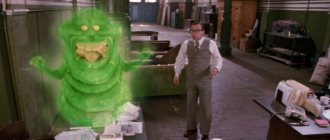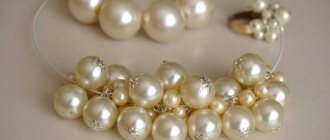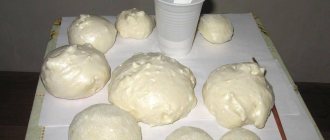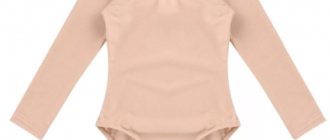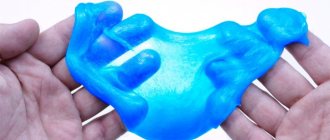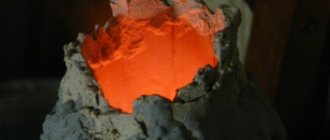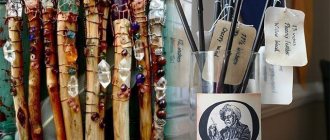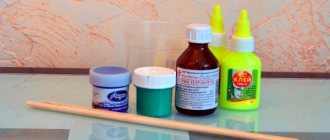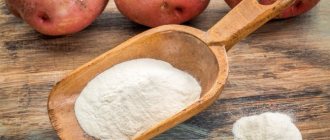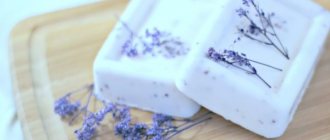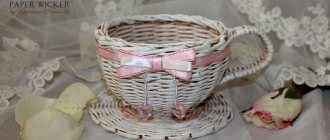Needlework
06.28.2018 Anastasia Prozheva
All those who have ever watched science fiction films have seen various luminous liquids in them. Surely you have wondered how to make a luminous liquid from improvised materials and whether it is even possible. It is quite possible that you will succeed!
Chemical glow
Not only chemists can masterfully create various luminous substances. In fact, they borrowed this idea from nature. Animals and plants that have bioluminescence can glow in the dark. Why do they need this? For example, fireflies attract females with their glow. Some species of deep-sea fish attract prey in this way. Other animals use the glow to scare away or for camouflage. This glow is a complex physical and chemical reaction, as a result of which chemical energy is converted into light.
People have learned to use bioluminescence for their own purposes. For example, during the war, the Japanese used dried crustaceans, which had a glow, to read maps. The power of such light was enough to read maps and reports and at the same time remain invisible to the enemy. Bioluminescence is widely used in medicine and analytical chemistry - with the help of luminous bacteria, the content of certain substances in cells is checked.
You can also use glow for entertainment purposes - create an atmospheric party or paint the walls with luminous paint. We invite you to study several recipes for creating luminous liquids at home.
How to make glowing liquid at home recipes
It’s difficult to guess what the luminous liquid is called in one word, but you can create such a unique phenomenon at home without difficulty, using several methods. They are based on the use of certain components and there is a risk that they will not work out if the basic rules and proportions of all ingredients are not followed. To test and confirm the veracity of the recommended recipe, you can try the following options on how to make a luminous liquid. Check them out in more detail below.
From improvised means and water without luminol
If your experiment is based solely on curiosity, then it is not necessary to spend a lot of money on special chemicals such as luminol. Everything is quite possible to do while at home, immediately after reading this recipe. Don't worry, the necessary tools will always be at your fingertips. Check out the simple recipe for this method using soda and its additional components below.
To obtain the glowing liquid you will need:
- Half a liter of any sparkling water.
- A teaspoon of salt.
- Two or three caps of table vinegar.
- Three teaspoons of hydrogen peroxide.
Cooking process:
- Pour and pour the ingredients into the water one by one, starting with salt.
- Acidify the liquid with vinegar.
- Using hydrogen peroxide, make the final stage of the experiment: the liquid should sizzle.
- Close the bottle with a lid and mix everything well. This may take 10-15 minutes.
- Open a bottle and pour some into a glass, for example, and you will see the liquid glow.
DIY recipe with luminol without vinegar and hydrogen peroxide
The following recipe for a glowing liquid cannot be called simple, because it requires special chemicals, which will cost you a little. However, you can easily use this method to make a luminous liquid with your own hands. When preparing this light-emitting water, you should observe all precautions, strict sequence and proportions of components, and stock up on special utensils (for example, a flask with a lid) in advance. Check out the step-by-step recipe:
Components:
- Luminol up to three grams.
- Dimexide (or dimethyl sulfoxide) 30 ml (easily found in the pharmacy).
- Dry alkali 35 grams (the same potassium hydroxide).
- Any fluorescent dye (green paint, for example).
How to perform the experiment:
- Pour luminol into the flask and then add the remaining ingredients.
- Be careful to close the flask and stir the liquid slowly.
- Turn off the lights to allow everyone to see the promised glow.
- About how long such a liquid glows: after a couple of moments the light may become dim and disappear, then simply open the flask to let air into the chemical composition - and the bright glow will return.
Using Vitamin B
If you're looking to entertain your child with a fun experience but aren't a fan of chemistry, make your bath water glow with a harmless bath recipe. All you need is a bath with warm water (15 liters maximum) and several ampoules of vitamin B (15 jars if in powder, 15 ampoules if in pink liquid form) dissolved in it.
To make the experiment a success, illuminate the bathing room using a special fluorescent lamp. The water will emit a beautiful glow, so you can give your baby a few moments of happiness. Let him swim in this water to fully enjoy the positive emotions from the child’s delight and your affection at the beautiful glowing spectacle. Unfortunately, such water cannot be called a tasty and glowing liquid, so make sure that your baby doesn’t accidentally get drunk.
Other recipes
There are many other ways to make glowing liquid at home. If the previous methods for some reason did not work or you do not have enough patience or time to purchase special components, try your luck in other options for preparing luminous water. Below you will find several additional ways to beautifully highlight liquid. Be patient and read them in more detail further. Don't forget that the whole truth of a successful experience is hidden in the proportions and set of components.
Ingredients to make glowing water from sodium tetraborate:
- 140 ml water.
- Half a teaspoon of sodium tetraborate (or borax otherwise). You can look in pharmacies.
- A teaspoon of baking soda.
- Three caps of 3% peroxide.
How to make glowing liquid:
- Dissolve sodium tetraborate in water.
- Then add soda, you will see how a large amount of carbon dioxide is released (the water will begin to foam and hiss).
- Add peroxide last.
- Enjoy this DIY neon lantern in the dark.
Glowing liquid with potassium permanganate crystals
Components:
- Half a glass of tap water (chlorine content is important).
- Two scoops of laundry detergent.
- Three percent hydrogen peroxide in an amount of 10 ml.
- Three percent luminol solution 5 ml.
- Manganese at the very tip of the knife (for a very weak solution - literally a few crystals).
Algorithm for preparing luminous liquid:
- Dissolve the powder completely with water.
- Throw in the peroxide.
- Next, immediately dissolve luminol in the liquid.
- After thorough mixing, add the remaining component - manganese.
- Due to the fact that water contains chlorine, luminol, when it gets into such an environment with an alkali, will begin to emit a glow.
Safety precautions
Do not forget about such an important aspect as safety precautions when working with chemicals. Although the recipes offered to you in this article will not contain caustic or toxic substances, it is still worth taking some protective measures:
- The container in which you will mix substances should be such that you won’t mind disposing of it later.
- Protect your body by wearing gloves, safety glasses, and a gown or other non-synthetic clothing.
- The workplace must be well ventilated.
- Keep children away from work.
Related article: Bright crocheted cardigan with pattern
What precautions should you take at home?
When making such a beautiful glowing liquid, you should remember that you will have to deal with chemicals, and this can always be an extremely dangerous activity. Therefore, you should stock up on special protective equipment in advance: glasses, gloves, dishes (after the experiment with which they can be immediately disposed of), put on additional non-synthetic clothing (a cotton robe, for example). And the most important point is to prevent any contact of children with chemical components prepared in advance for the experiment.
Simple recipe
In general, all recipes for preparing luminous liquids are divided into two types: recipes using luminol and recipes without luminol. Since this substance can only be obtained in specialized stores that sell chemical reagents, we will not consider recipes using it.
Try making a glowing liquid from water, peroxide, salt and vinegar. To implement this experience you will need:
- Plain water 500 ml;
- Table salt 2 tablespoons;
- Table vinegar 4 tablespoons;
- Hydrogen peroxide 3% 4 teaspoons.
You can find all these ingredients in almost any home, and if something is missing, you can simply buy more at a pharmacy or store. All you need to do is mix these components in a container with a tight-fitting lid.
You need to shake very thoroughly, for 10-15 minutes, so be patient.
Other modifications
The question of how to make a glowing liquid at home has other answers. For the ingredients for the second version of glowing water, you should go to the pharmacy. You will need to purchase the following reagents for experiments:
- boric acid - you need to purchase a pure preparation, boric alcohol is not suitable;
- caustic pine extract;
- water for injection - approximately 500 ml, although you can take less.
First, you need to dissolve the pine concentrate in water at the rate of one drop per tablespoon. Be careful - if you want to make a large volume of luminous liquid, you will have to buy several jars of the drug. Then gradually add boric acid to the resulting solution in the same concentration as described above. Heat the liquid over medium heat until it boils and carefully remove large bubbles with a spoon, making sure that drops do not fall on the skin. After 5-10 minutes of boiling, you will get the treasured luminous water, flickering in the dark with a yellowish-green color.
There is an alternative method, although the glow time when using it reaches only 3-5 minutes. You need to go to the store, buy a pack of soda and mineral water with an alkaline composition.
Be careful - we are talking about naturally carbonated water, and not purified liquid, which is often sold under the guise of mineral water.
For half a liter of water you will need to add a teaspoon of baking soda and three teaspoons of a three percent hydrogen peroxide solution. It is necessary to shake the luminous liquid for approximately 15 minutes, after which it will acquire a slightly yellowish tint and will flicker faintly in the dark for a short time.
With borax and tonic
To prepare a glowing liquid using borax you will need:
- Water 140 ml;
- Three caps of three percent hydrogen peroxide;
- Half a teaspoon of borax (sodium tetraborate);
- One teaspoon of baking soda.
Borax and peroxide can be purchased at the pharmacy. The secret of this recipe lies in the exact proportions and alternate mixing of the components. Let's get started!
Borax powder must be dissolved in water. Then add soda there. This will begin a chemical reaction with the release of carbon dioxide - the solution will begin to hiss and foam. All that remains is to add hydrogen peroxide, mix the ingredients thoroughly and turn off the light. The glowing liquid is ready!
A regular tonic that contains quinine can glow. To do this, just pour it into a glass and illuminate it with an ultraviolet lamp. The liquid has a pleasant, uniform blue tint.
Just need to be illuminated from above - glass does not transmit UV rays.
Method with phosphor
This method is more complicated than the previous ones, but with its help you can get a brighter and richer shining liquid. You need to work extremely carefully, wearing a protective gown, mask and gloves. For the experiment you will need:
- boric acid – 2-3 g;
- pine concentrate – 1 g;
- water – 50 ml.
To work, you will need an aluminum spoon, a metal container and dry fuel. These items cannot be used for food after the experiment. Step-by-step instructions for the experiment:
- Dissolve 1 gram of pine concentrate in 50 ml of water.
- Pour boric acid into a spoon.
- Add pine solution 1 drop at a time.
- When the mass resembles a paste, smooth it over the surface of a spoon and begin heating it with dry fuel.
- After the water evaporates, the mixture will melt. Poke any bubbles that appear.
- Cool the mixture and grind.
By following the instructions above, you will receive a phosphor. You can buy this powder, the price depends on the shade. Based on it, you can make a shimmering liquid that is suitable for painting surfaces and can be used for interior design. Step-by-step manufacturing instructions:
- Add phosphor powder in a ratio of 70:30 to colorless interior varnish (sold in hardware stores).
- Add a little solvent (no more than 1% of the total mass).
- Shake thoroughly.
- You have a transparent glowing varnish. If you want to add any shade, use colors.
- MSCT - what kind of research is it? For what symptoms is multislice computed tomography indicated?
- What is the most effective remedy for acne and acne?
- Boucher cake - recipes step by step with photos. How to prepare Boucher cake at home according to GOST
Markers and sticks
You can find glow sticks and fluorescent markers on the open market. What lengths will you go to in order to obtain the coveted luminous liquid! Let's make it from a marker. To do this, you need to take a fluorescent marker; it glows in ultraviolet light. This glow gives the substance a phosphor. Widely used for industrial and entertainment purposes. With this marker you can write secret messages that are invisible without a special lamp. It can also be used in welding work. You need to extract this substance from the marker. To do this, you need to put in a little effort and skill and remove the ink-soaked rod from the marker.
Related article: Cardboard Christmas reindeer. Master Class
Remove the cotton-like material from the rod and place it in a glass of plain water.
Naturally, the more water you take, the weaker the glow will be, so either increase the number of markers you use, or take less water.
Leave the liquid for about an hour so that the dye completely dissolves into the water. Wring out the cotton wool thoroughly - you don't need to miss a drop of magic ink!
Now turn off the light and illuminate the glass from above with an ultraviolet lamp. The incredibly beautiful glowing liquid is ready! Markers come in different colors, which means you can experiment with colors.
It’s impossible to think of anything simpler than dissolving a glow stick in water. Just remember the law of dissolution - the lower the concentration of the starting substance (luminophore), the weaker the glow will be. To prepare this solution, simply cut several glow sticks and pour their contents into a glass of water. To enhance the glow, add a little hydrogen peroxide.
Well, the simplest thing! Visit any craft store and buy paint with phosphor, it glows in the dark. You can, of course, apply it to a wall, a picture, clothing, or even your body, or you can dissolve it in water and get a luminous liquid.
